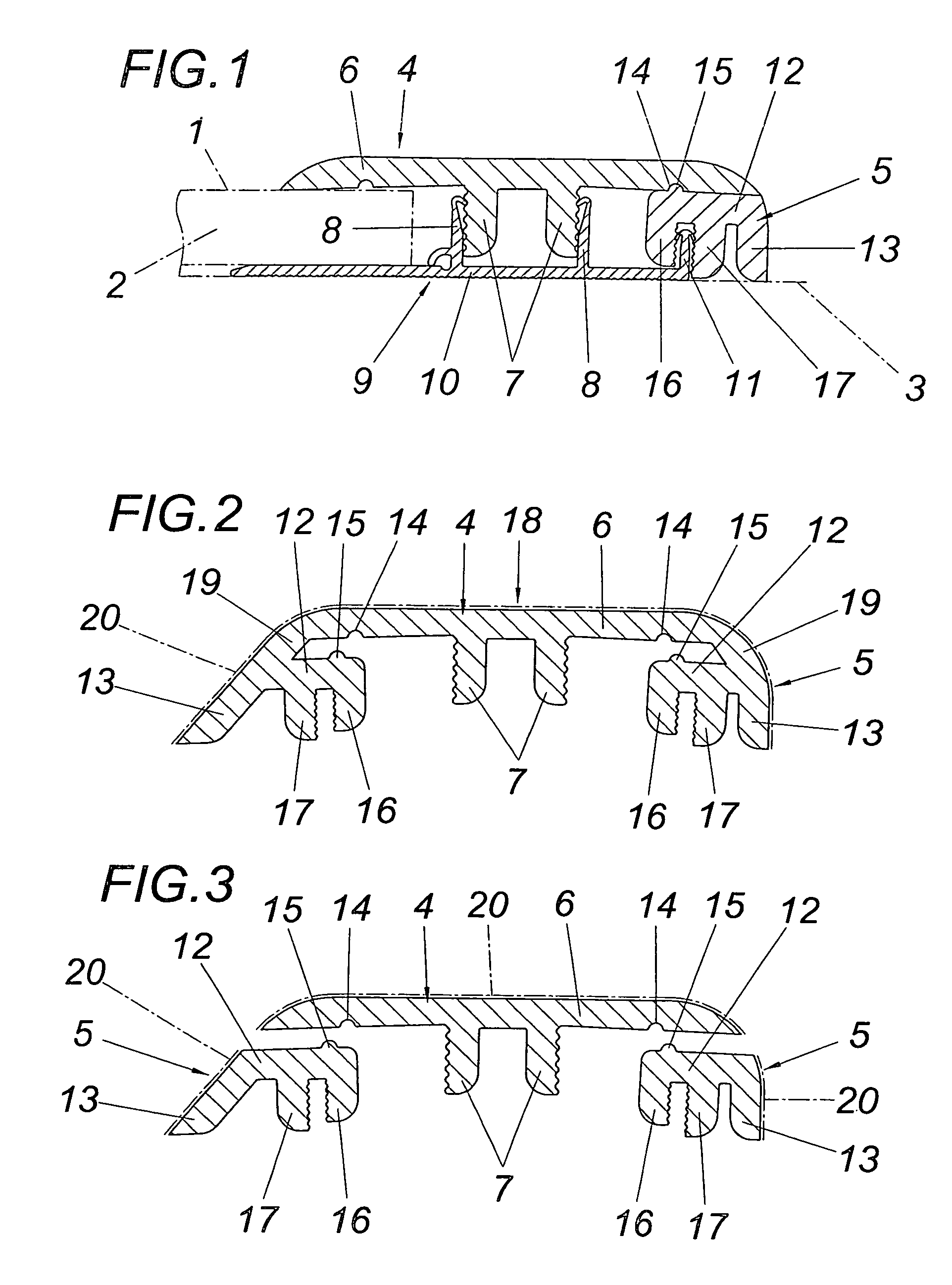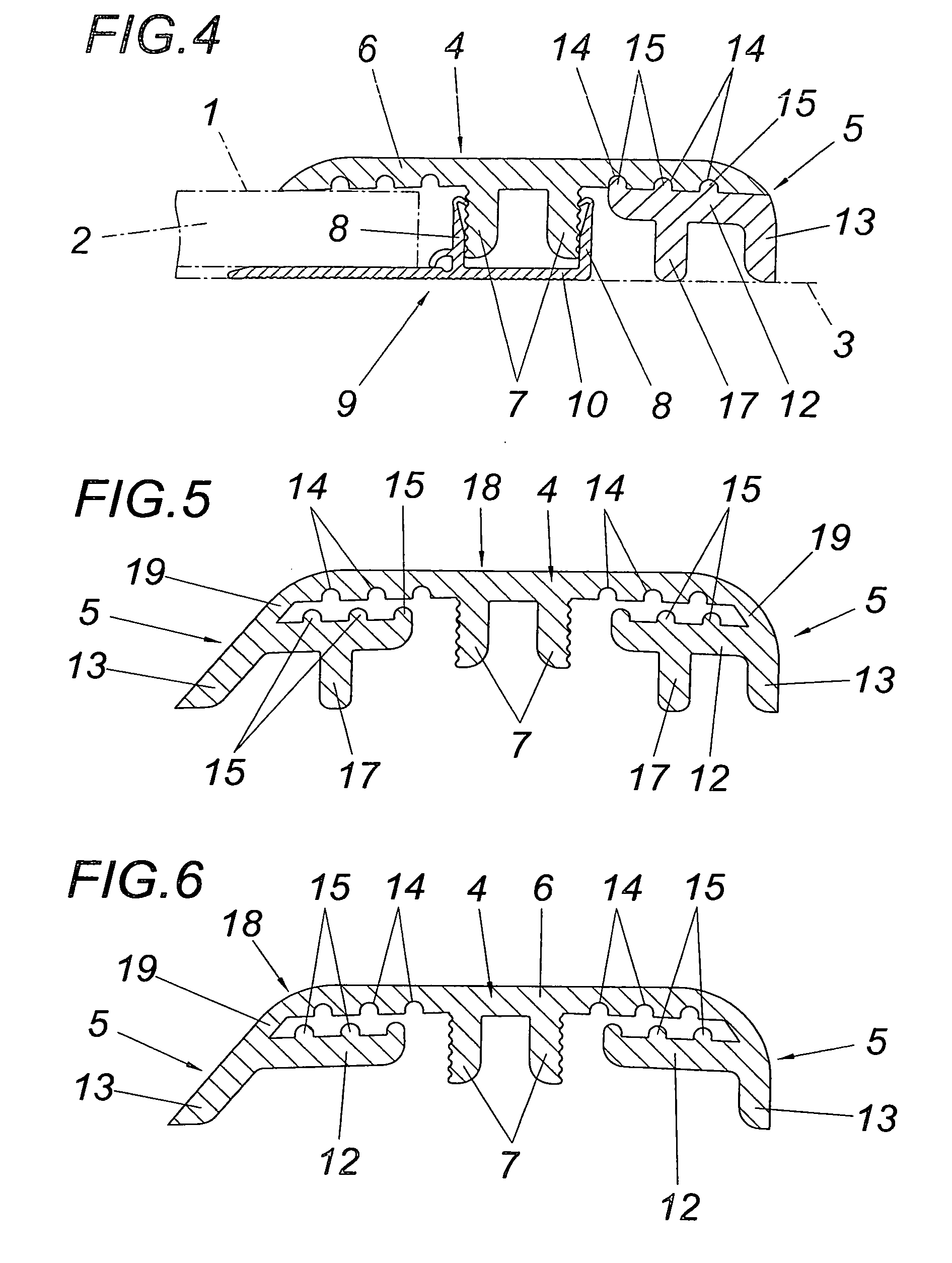Covering Device for Floor Coverings
a technology for floor coverings and covers, applied in the direction of decorative arts, structural elements, building components, etc., can solve the problems of reducing the stability of the profiled cover, virtually impossible to obtain a snug fit between the profiled cover and the compensating strip, and cannot always be taken for granted, so as to facilitate conventional coating and simple manufacturing conditions
- Summary
- Abstract
- Description
- Claims
- Application Information
AI Technical Summary
Benefits of technology
Problems solved by technology
Method used
Image
Examples
Embodiment Construction
[0019]In accordance with the embodiment in FIG. 1, a difference in height between a floor surface 1, for instance a floor covering 2, and a floor surface 3 requires bridging, the latter surface in accordance with the embodiment being formed by the substrate for the floor covering 2. The floor surface 3 can of course also be formed by another floor covering. To bridge the difference in height between the floor surfaces 1 and 3, a covering device is used, comprising a profiled cover 4 and a compensating strip 5. The profiled cover 4 is provided with a covering flange 6 and two clamping webs 7 projecting from the covering flange 6, the clamping webs 7 being retained between two clamp-like retaining legs 8 of a fixture 9.
[0020]The fixture 9 is fastened to the substrate 3 by means of a floor mounting plate 10, with the floor mounting plate 10 being extended past the retaining legs 8 toward the compensating strip 5 and having an additional retaining leg 11 for the compensating strip 5. Th...
PUM
 Login to View More
Login to View More Abstract
Description
Claims
Application Information
 Login to View More
Login to View More - R&D
- Intellectual Property
- Life Sciences
- Materials
- Tech Scout
- Unparalleled Data Quality
- Higher Quality Content
- 60% Fewer Hallucinations
Browse by: Latest US Patents, China's latest patents, Technical Efficacy Thesaurus, Application Domain, Technology Topic, Popular Technical Reports.
© 2025 PatSnap. All rights reserved.Legal|Privacy policy|Modern Slavery Act Transparency Statement|Sitemap|About US| Contact US: help@patsnap.com



